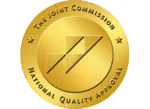There is a substantial difference between rapid detox and medication-assisted detox. Understanding heroin and the need for assistance in the detoxification of drugs is the first step in choosing the right addiction treatment and medication-assisted treatment services in Los Angeles.
Heroin Explained
Heroin is a highly addictive substance that begins as opium, a narcotic derivative of the opium poppy plant. The opium is refined to make morphine, which is then refined again to make heroin. Once heroin hits the brain, it turns back into morphine and attaches to opioid receptors in the brain. These are the receptors that can decrease the body’s perception of pain and increase the level of dopamine, elevating mood and giving users a sense of euphoria or “high.”
Individuals who use heroin have several methods of use from which to choose, including injecting heroin, causing the drug to bypass being metabolized and head straight through the bloodstream to the brain. Many users prefer this method because it is known to be the fastest way to get “high.” Other choices include inhaling heroin by smoking it or ingesting heroin by snorting it.
Heroin is the world’s single most addictive drug. Users regularly develop dependence and tolerance, meaning they need to use larger amounts of the drug to feel the same effect. Dependence can be (and typically is) both psychological and physical. Therefore, many individuals participate in a supervised heroin detoxification program to stop using.
Safe Detoxification Requires Medical Supervision
Without detoxification assistance, it can be difficult to stop the long-term use of heroin. Many users are fearful of withdrawal symptoms, which can start to appear as soon as six hours after a person last used heroin. Heroin withdrawal is a medical condition that requires the attention of medical professionals. Their presence also lessens the likelihood of relapse.
The physical and mental pain associated with heroin withdrawal can be a trigger for heroin relapse. Withdrawal symptoms can include cold sweats, nausea, vomiting, stomach pains and spasms, insomnia, depression, and deep bone pain. Heroin use suppresses the brain (and any pain, emotional and physical). When a person stops using heroin, normal brain function returns, which means physical and emotional pains can return as well. When this happens, many choose to continue their use of heroin rather than face the pain that may reappear.
Assisted detox programs, whether rapid or traditional, use medications to address the symptoms being felt by the client as heroin leaves the body. While medication-assisted treatments can reduce the symptoms of withdrawal, it is important to avoid medications that are habit-forming.
Pharmacotherapy Treatments
Rapid detox programs and most traditional detox programs use a variety of pharmacotherapy medicines to aid in the process of withdrawal. However, their use may occur in quite different ways.
Traditional detox programs use the ongoing treatment of methadone or suboxone to help with cravings, as well as benzodiazepines to treat other symptoms. Unfortunately, all three medicines offer similar effects to heroin. They can be habit-forming, and a person using these medicines will experience withdrawal symptoms when discontinuing use. Essentially, by using medicines such as methadone or suboxone, a person can become independent from heroin but dependent on a buprenorphine-based medicine.
Rapid detox programs use medicines such as Vivitrol and naltrexone, both non-habit forming, to help with withdrawal symptoms. These medicines prevent the client from feeling “high” or euphoric, as they would with methadone or suboxone. Because the client is monitored around the clock, other withdrawal symptoms can be treated based on the advice of a physician and specialists trained in the field of rapid detox. With the use of Vivitrol and naltrexone, it’s possible to greatly reduce the client’s withdrawal symptoms and cravings.
Traditional Medication-Assisted Detox
Traditional detox programs admit clients to a detox facility where they will spend between one and two weeks. The duration depends on the level and severity of withdrawal symptoms.
Most traditional detox programs start with an evaluation or diagnostic period to determine the exact needs of the client as well as establish the treatment plan. Clients then enter the detoxification phase, where they receive buprenorphine-type medicines. In a traditional detox program, clients are usually paired with one or more individuals in a room. Having a roommate is necessary for such programs, due to the steady increase in people seeking treatment.
Once detox is complete, clients transfer to the rehabilitation wing of the facility. Clients then begin a routine of attending individual and group therapies until the recovery process is complete. It is here they will learn coping skills to help them in recovery. Upon discharge, clients receive a treatment plan to follow, including outpatient group or individual therapy.
It’s important to note that few clients leave detox with a prescription for methadone or suboxone. The idea is to wean them off these drugs before they enter rehab treatment. It is up to the client to regain access to these medications once they leave a treatment program.
Rapid Detox
The rapid detox process begins with an extensive pre-evaluation to determine the needs of the client. The medical practitioners and specialists evaluate bloodwork, physical assessments, and psychological exams to create a treatment plan.
Rapid detox programs offer private rooms in an intensive care unit of a hospital. This means clients have immediate access to both doctors and nurses on a 24-hour basis. To make the process safer, monitors measure the vital statistics of each client at all times. This provides medical staff with constant feedback on the client’s health. Because rapid detox takes place in accredited hospitals, every client has access to a range of specialists, including neurologists, cardiologists, gastroenterologists, and psychiatrists.
During the detox phase of treatment, anesthesia is used to assist the client. This process prevents the client from feeling many of the withdrawal symptoms associated with heroin.
Rapid detox can last a week, often less than a week. After detox, the client enters the rehabilitation phase, usually at a nearby retreat, in a private room. The rapid detox retreat allows the client to experience alternative therapies such as massage, yoga, meditation, and acupuncture. In addition, counselors and medical staff are available to address any needs and continue the medication protocol.
Upon release from treatment, clients work with the staff to create an aftercare plan of counseling, alternative therapies, and the continuation of the medications that were in use during treatment.
Getting Help
If you are looking for treatment for heroin addiction, Westwind Recovery® is here to help you. Our Los Angeles addiction rehab facility offers comprehensive treatment for those suffering from substance abuse. Reach out to us today to learn more about our services.

Dr. Deena is the Chief Clinical Officer of Westwind Recovery®, an award-winning outpatient treatment center in Los Angeles where she oversees the clinical and administrative program and treatment methods. Dr. Deena is a doctor of psychology and licensed clinical social worker since 1993. LCSW #20628. Originally from the East Coast, Dr. Deena has worked running treatment centers, worked as a therapist in psychiatric hospitals as well as school settings and currently has a thriving private practice in the LA area. Dr. Deena has appeared regularly on the Dr. Phil Show as an expert since 2003. She has also been featured on many other TV shows, podcasts and has contributed to written publications as well as podcasts.




